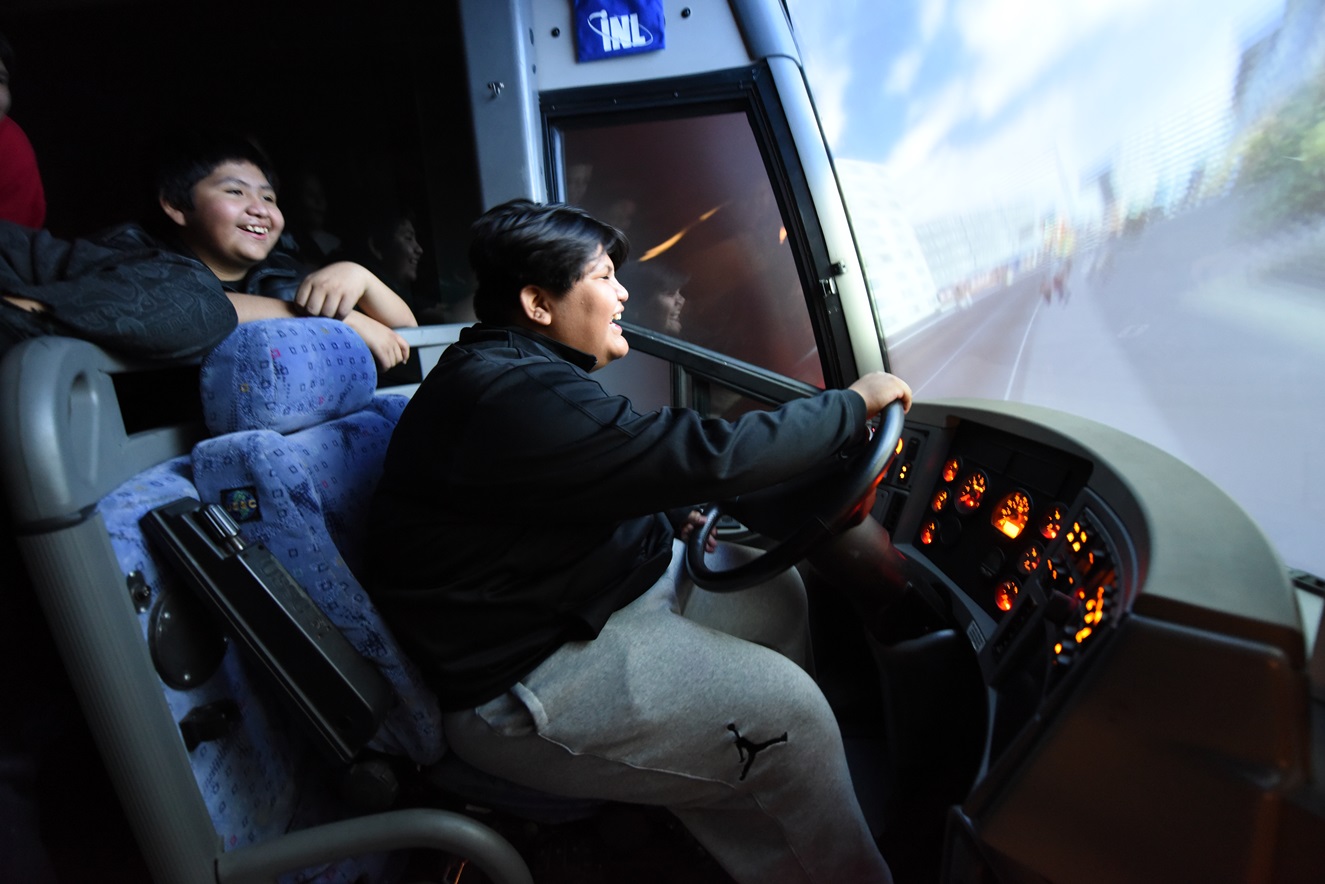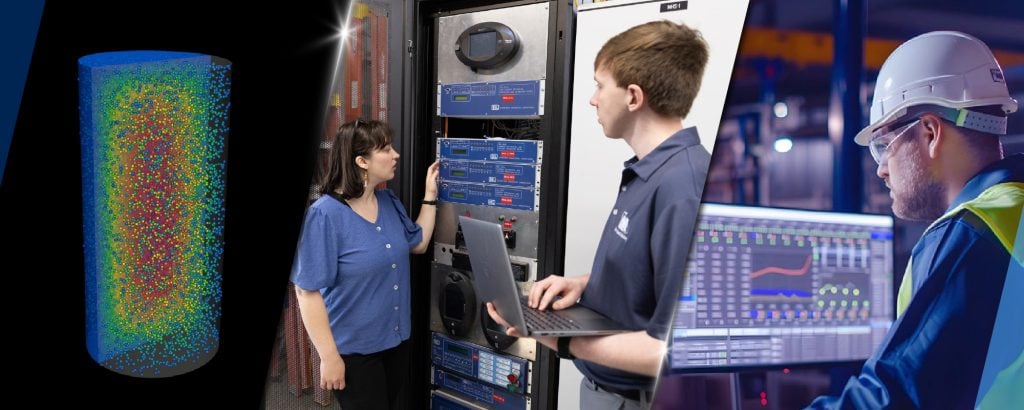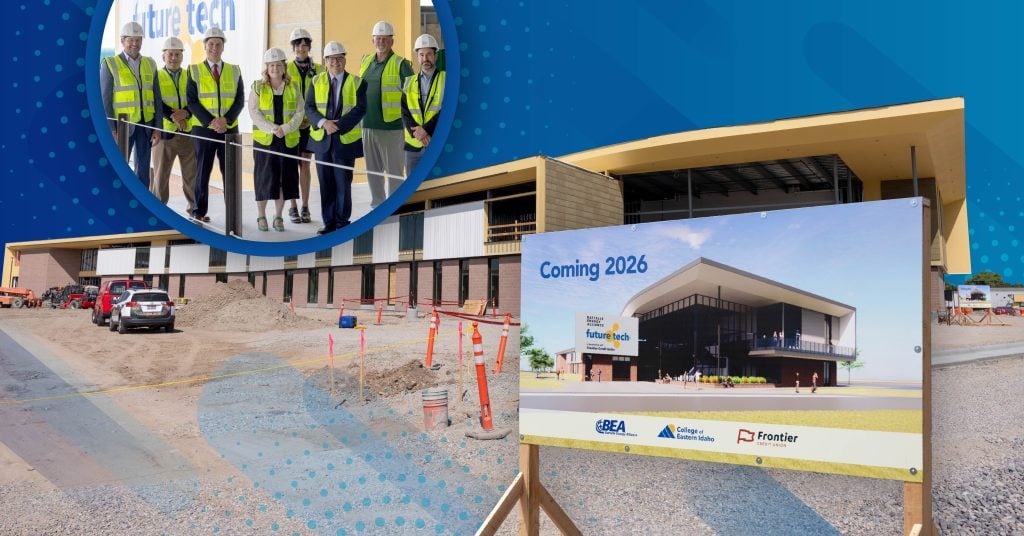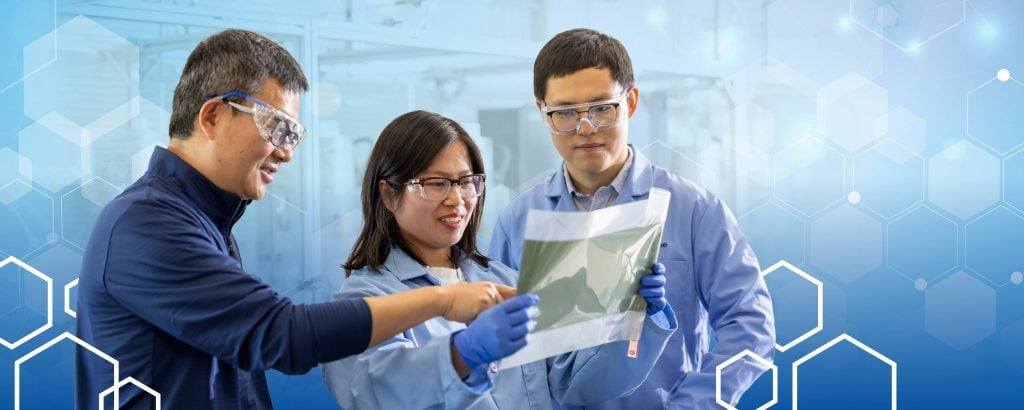A group of students from the Shoshone-Bannock Middle School recently spent the day at Idaho National Laboratory learning about science and technology.
During the Native American science, technology, engineering and mathematics (STEM) Day, students interacted with research scientists and nuclear engineers, and learned about STEM careers and opportunities for post-secondary education and future internships. They deepened their understanding of cybersecurity and wireless systems, forensic science, nuclear science, the history of INL, the CAVE (computer-assisted virtual environment), and modeling and simulation technology.
Anne Seifert, INL K-12 Education manager, said, “We immerse the students in hands-on programs that break down stereotypes about STEM careers and give them great role models to follow.”
Opportunities like this offer students a chance to relate what they are learning in school with real-world careers and real-world people. The emphasis on K-12 STEM programs is due to timing.
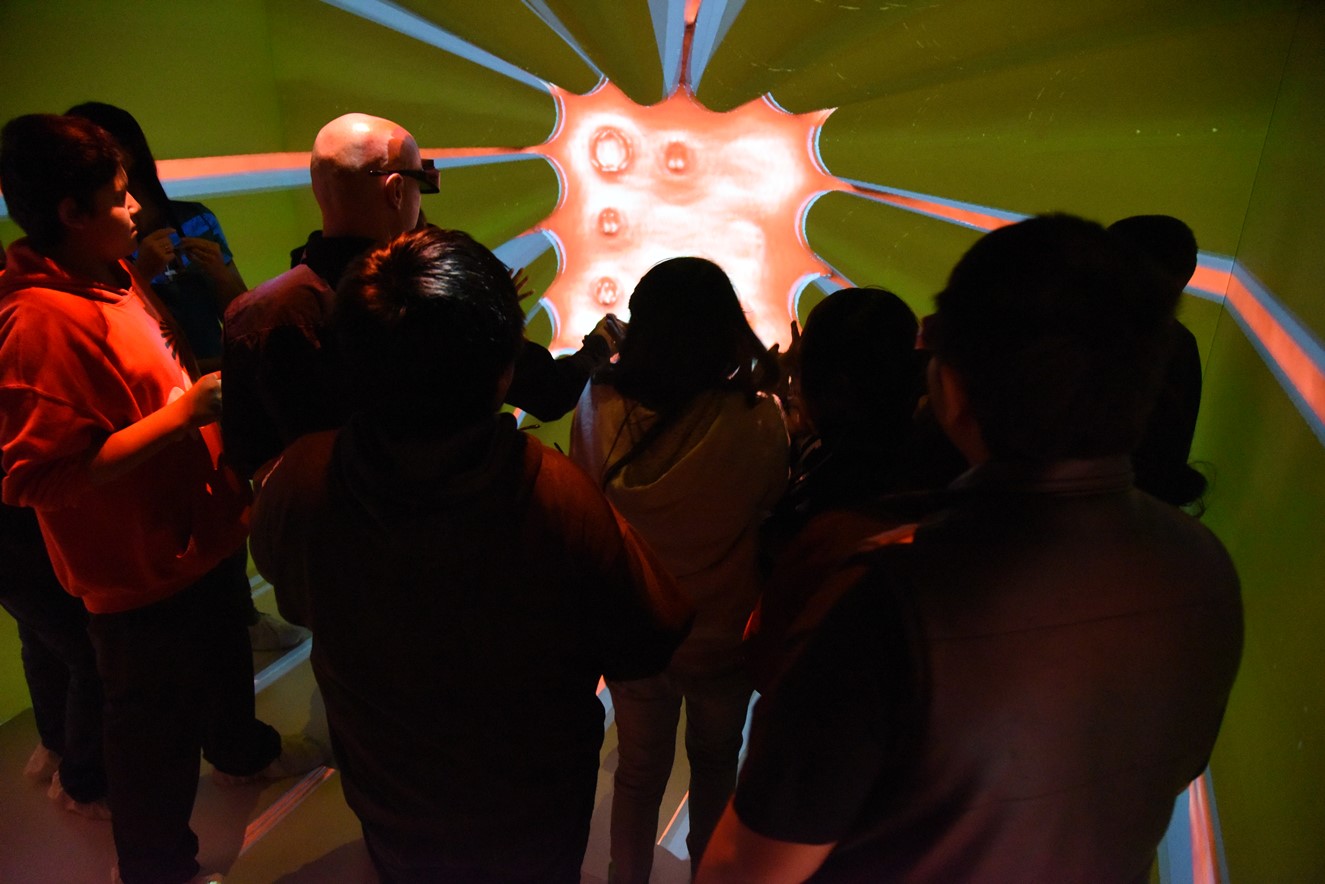
Research suggests that by the age 13 or 14 (typically eighth grade), students are already choosing subjects they want to focus on, which often paves the way for their future education and career choices. At this age, students begin to picture themselves in their future career. This self-image can be influenced by many factors, such as exposure to career choices in and out of school, exposure to STEM content or STEM career choices, academic or course success or failure, and economic or family influences.
That’s why it is so important to reach children in towns small and large, and of all backgrounds and origins, so an interest in STEM subjects can be sparked early.
The chance to provide that spark is the reason INL presenters love engaging with students in activities like this. Native American STEM Day event is one of several INL programs aimed at sparking their passion in STEM, and encouraging them to engage with people in the kinds of careers needed to fuel the talent pipeline of the future energy workforce.
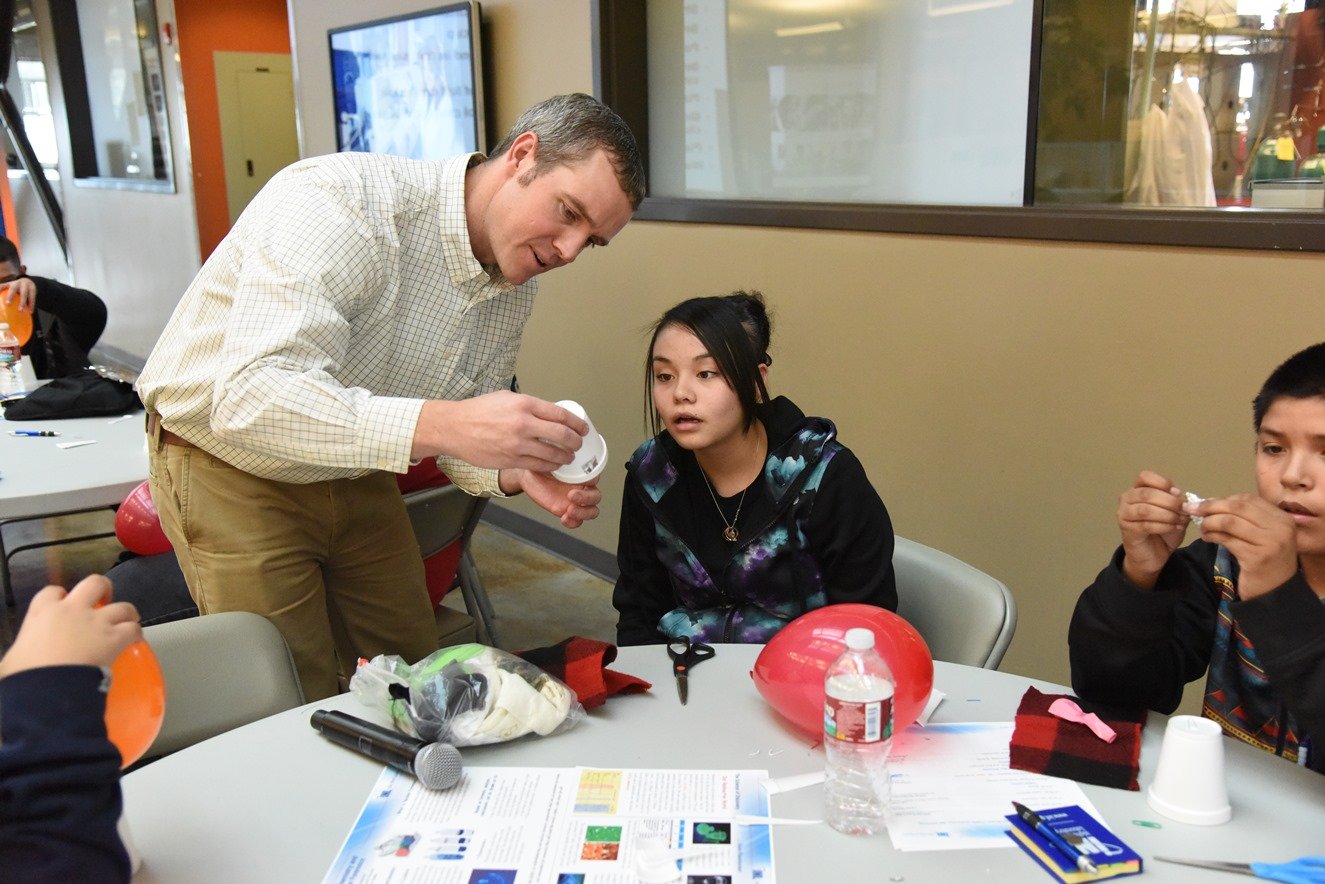
“Daniel Devasirvatham, Catherine Riddle, Hollie Gilbert and Colby Jensen are just a few of the talented employees we tap into for help at events like this,” Seifert said. “They share their excitement and enthusiasm for what they do at the lab and why it is important to not only INL, but the world.”
Linda McCoy, scientific adviser for the Department of Energy Idaho Operations Office, was on hand to welcome the students, and she agrees.
“Education was the key to success for me,” McCoy said. “I was the first person in my family to earn a college degree and it paved the way for many opportunities. “
McCoy went on to explain that STEM jobs are in high demand and usually bring a very good salary. Most importantly, these careers are satisfying on a professional level because individuals are engaged in a field that constantly requires learning and solving problems. Such careers are rewarding on a personal level because scientists and engineers come up with the ideas to solve global problems – like something as simple as access to clean water.
Seifert said events like this are not only about STEM, they are about preparing students for life. INL has a strong commitment to the education of the next generation of scientists, engineers and technicians.
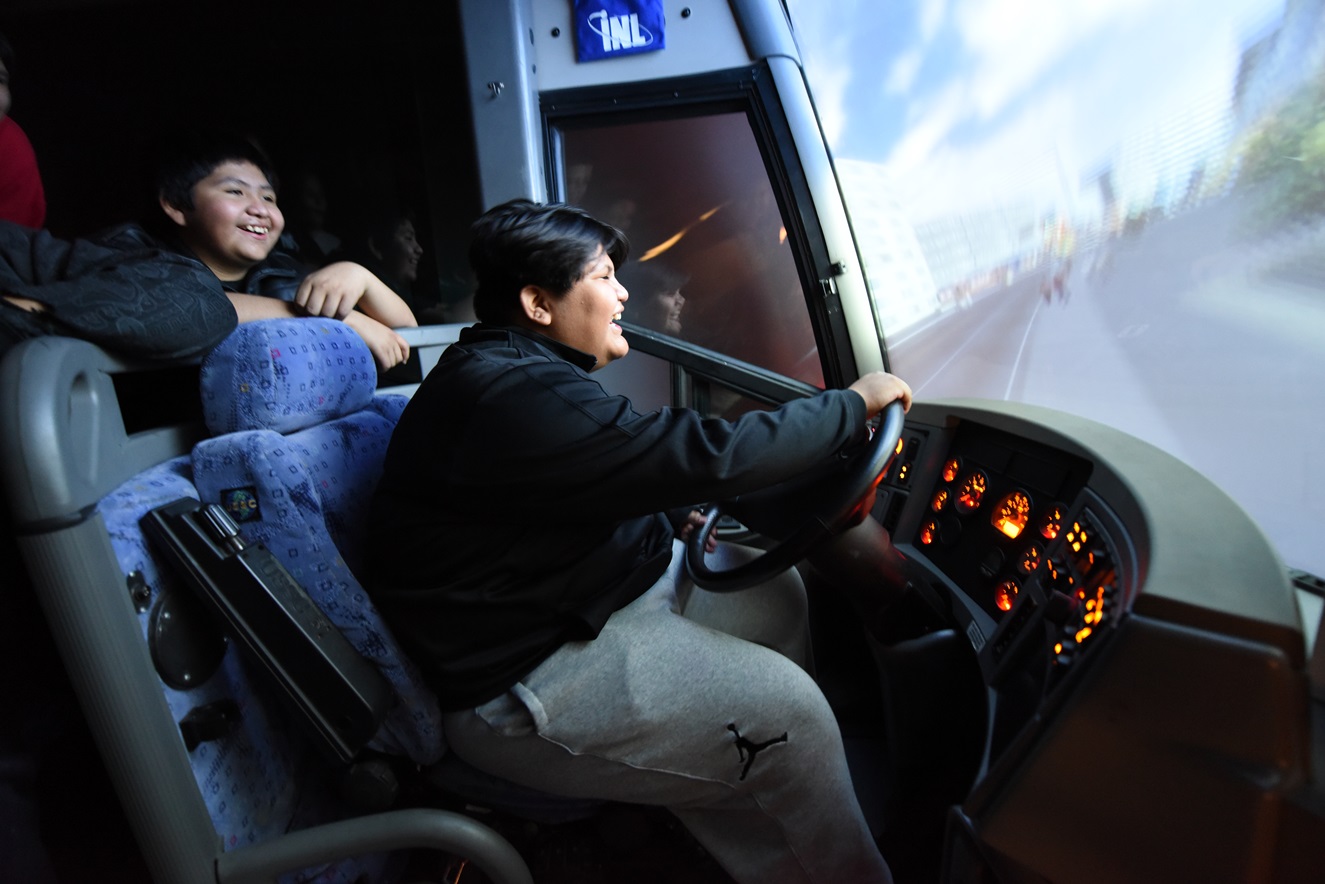
“We want to inspire the students to pursue a career in the STEM areas,” Seifert said. “What better place to do that than at INL, where world-renowned scientists and engineers are conducting important research? This event allows students to see first-hand how science, math and engineering principles apply in the real world.”
After the event, students said, the future is on their minds.
Kalynn Pokibro said, “Coming here and enjoying the presentations and seeing all the different things that I can do when I grow up has been really fun.”
Shoshone-Bannock Middle School science teacher Mikel Green added that STEM Day was an amazing opportunity for her students. “The hands-on classes and presentations helped to provide my students knowledge of the things they can look forward to in their future. It helps them understand the opportunities they can work toward and think about.”
At the end of the day, students had a chance to experience the CAVE and “drive” an INL bus in the heavy vehicle simulator, something they say they’ll never forget.

